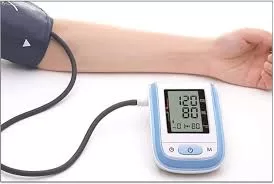The Unexpected Consequences of COVID-19 Pandemic Measures
Since the COVID-19 pandemic began, alcoholic hand sanitizers have become a ubiquitous sight in homes, workplaces, and public spaces across the globe. However, this widespread accessibility has inadvertently created a new public health challenge—alcohol-dependent individuals misusing these sanitizers for consumption. This alarming trend poses significant risks and complicates the work of emergency departments, as highlighted in a recent case report by Dr. Mahmoud El Hussein and colleagues from Hôpital Lariboisière in Paris, France.
Case Presentation: A Young Man’s Deceptive Symptoms
The case in question involves a 26-year-old man who presented at the emergency department with severe abdominal pain. Upon arrival, he was stable but exhibited signs of nervousness and occasional verbal aggression. Despite his concerning symptoms, the patient denied any history of significant medical conditions and was not on any medication.
Initial physical examination revealed a soft, diffusely tender abdomen, tachycardia, and poor hygiene, but the patient was afebrile. An electrocardiogram (ECG) confirmed the tachycardia, but there were no indications of ischemia. Blood tests were largely unremarkable, with only slightly elevated liver enzymes noted, effectively ruling out conditions such as internal bleeding or kidney disease.
Further diagnostic tests, including a urease rapid test for kidney stones and a CT scan of the abdomen, were conducted. The scans showed only signs of a fatty liver, with no evidence of organ perforation, volvulus, or mesenteric ischemia.
A Neighbor’s Tip Unveils the Truth
Despite extensive diagnostic efforts, the patient’s symptoms persisted. Intravenous analgesics and proton pump inhibitors, including paracetamol, phloroglucin, and pantoprazole, failed to alleviate his pain. Even morphine administered intravenously for sedation offered little relief.
The turning point came when a neighbor informed a nurse that he suspected the patient had been stealing and drinking hand sanitizer. With the patient’s consent, a blood alcohol test was conducted, revealing a blood alcohol concentration of 0.2% (2 g/L). A urine test also tested positive for tetrahydrocannabinol (THC). Additional laboratory tests yielded the following results:
- Venous pH: 7.29 (normal: 7.32-7.38)
- Anion gap (mEq/L): 14 (normal: 3-9)
- Ketone bodies (mmol/L): 0.2 (normal: < 0.6)
- Calculated serum osmolality (mOsm/kg): 292 (normal: 285-295)
- Measured serum osmolality (mOsm/kg): 320 (normal: 285-295)
- Osmolality gap (mOsm/kg): 2 (normal: < 10)
Confronted with these results, the patient admitted to feigning abdominal pain to mask his alcohol withdrawal symptoms. He revealed that he had stolen seven 475-mL bottles of hand sanitizer, consuming one and a half within the past 4-6 hours. The hand sanitizer in question contained 80% ethanol, 1.45% glycerol, and 0.13% hydrogen peroxide.
Discussion: A Growing Concern in Emergency Departments
Alcohol consumption in Germany alone results in approximately €57 billion in direct economic costs annually, according to the Federal Ministry of Health. In 2021, about 7.9 million people aged 18-64 years consumed alcohol in a risky manner, and approximately 9 million people were classified as alcoholics.
The case report underscores the desperation seen in individuals with advanced stages of alcohol addiction, who may consume any available alcoholic substance, including hand sanitizers. Emergency department staff must remain vigilant, as these individuals may encounter a variety of potentially harmful substances within medical settings.
While hand sanitizers primarily contain ethanol, they may also include other alcohols like isopropanol, methanol, or acetone, which can cause severe poisoning. Methanol, for instance, can lead to abdominal pain, visual disturbances, central nervous system damage, and even death. Substances like ethylene glycol, commonly found in antifreeze, can further complicate diagnosis by distorting blood values.
For physicians, particularly those in emergency departments, it is crucial to consider the possibility of alcohol abuse when symptoms are ambiguous. Engaging with the patient’s social environment and utilizing additional laboratory parameters, such as the osmolality gap, can help uncover substance abuse and guide appropriate treatment.
This case serves as a stark reminder of the unintended consequences of public health measures and the need for continued vigilance in the face of evolving challenges.












